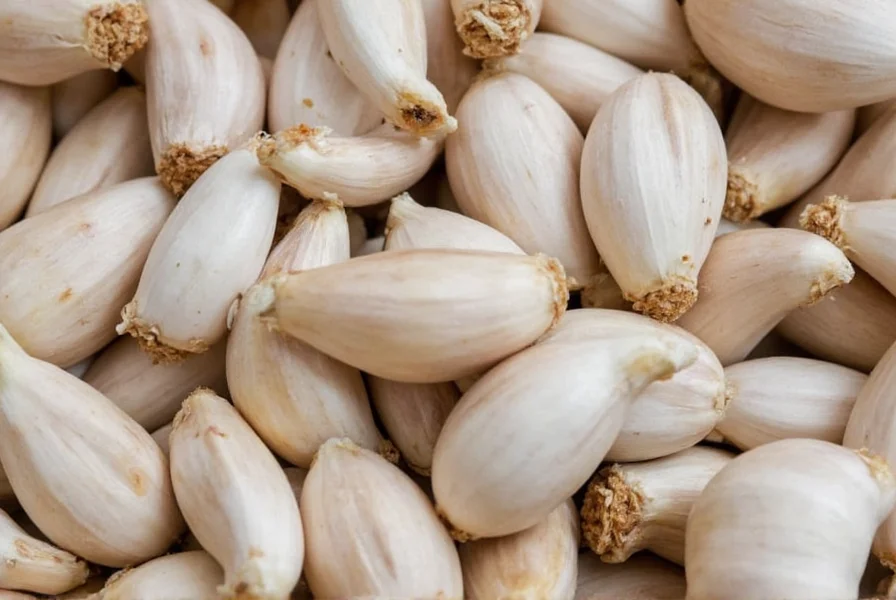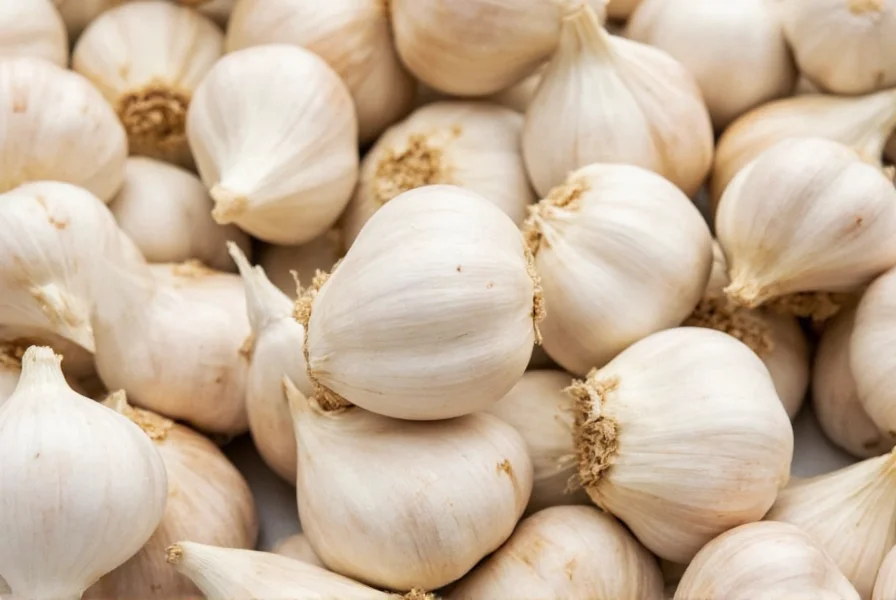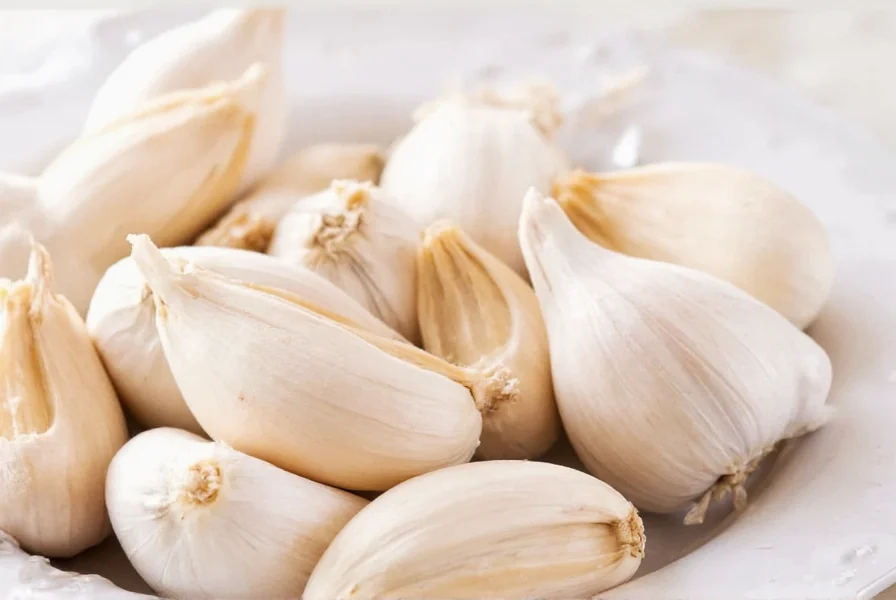Understanding the distinction between garlic cloves and the spice cloves prevents common kitchen confusion. Garlic cloves are pungent, flavorful segments packed with sulfur compounds that create garlic's characteristic aroma and health properties. Each garlic bulb typically contains 10-20 cloves protected by papery skin. The spice called cloves, meanwhile, are dried flower buds from a tropical evergreen tree and share no botanical relationship with garlic.
Garlic Terminology Clarified
Many home cooks mistakenly believe "garlic and cloves" refers to two separate ingredients. This confusion stems from the dual meaning of "clove" in culinary contexts. When discussing garlic cloves versus spice cloves, it's essential to recognize they come from entirely different plant families:
| Characteristic | Garlic Cloves | Spice Cloves |
|---|---|---|
| Botanical Source | Allium sativum (onion family) | Syzygium aromaticum (myrtle family) |
| Physical Form | Individual segments of a bulb | Dried flower buds |
| Flavor Profile | Pungent, savory, umami | Warm, sweet, spicy |
| Primary Culinary Use | Base flavor in savory dishes | Baking, mulled beverages, spice blends |
Selecting Quality Garlic Cloves
When choosing garlic for cooking, look for firm bulbs with tight, unbroken skin. Avoid garlic showing signs of sprouting, soft spots, or mold. Hardneck varieties typically offer more complex flavors than softneck types. For how to identify fresh garlic cloves, press gently - they should feel solid without soft areas. The papery skin should be dry and intact, not damp or peeling.

Proper Storage Techniques for Maximum Shelf Life
Understanding how to store garlic cloves properly significantly extends their usability. Keep whole bulbs in a cool, dark, well-ventilated area - never in the refrigerator where moisture promotes mold. Once separated from the bulb, individual cloves last approximately 7-10 days at room temperature. For longer storage, place unpeeled cloves in an airtight container in the refrigerator's crisper drawer for up to 2 weeks.
Roasted garlic enthusiasts should know that preserving roasted garlic cloves requires refrigeration in olive oil for no more than 1 week due to botulism risks. Freezing works well for both raw and roasted cloves - simply place in an airtight container for up to 6 months.
Preparation Methods and Culinary Applications
Peeling garlic cloves efficiently matters for maximizing garlic flavor in recipes. Try the shake-in-a-jar method: place cloves in a sealed container and shake vigorously to separate skins. For immediate use, crushing cloves with the flat side of a knife releases more flavor compounds than chopping alone.
Chefs understand that when to add garlic during cooking affects flavor development. Add minced garlic near the end of sautéing to preserve its sharp bite, or roast whole cloves for milder, sweeter notes. Raw garlic provides the strongest antimicrobial properties but can be harsh - letting chopped garlic rest for 10 minutes before cooking optimizes allicin formation.

Health Considerations of Garlic Consumption
Research suggests health benefits of fresh garlic cloves include cardiovascular support and antimicrobial properties, though these effects vary based on preparation. The compound allicin, responsible for many benefits, forms when garlic is cut or crushed. Cooking reduces but doesn't eliminate these properties - roasted garlic maintains some beneficial compounds.
While garlic shows promise in scientific studies on garlic and immune function, it shouldn't replace medical treatment. Consuming 1-2 cloves daily provides potential benefits without excessive gastrointestinal discomfort. Those on blood thinners should consult doctors about garlic consumption due to potential interactions.
Frequently Asked Questions
Can I substitute garlic cloves with garlic powder?
Yes, but with adjustments. One fresh garlic clove equals approximately 1/8 teaspoon garlic powder. Powder provides consistent flavor but lacks the complexity of fresh garlic. For best results in cooking with garlic powder versus fresh, add powder earlier in the cooking process since it doesn't require time to develop flavor.
Why do my garlic cloves sprout green shoots?
Sprouting occurs when garlic bulbs experience warmth and moisture, signaling the plant to grow. The green sprout (germ) contains bitter compounds. For using sprouted garlic cloves safely, remove the green shoot before use. Sprouted garlic remains edible but has slightly less intense flavor and altered texture.
How can I reduce garlic breath after eating?
Consuming fresh parsley, apples, or lemon juice helps neutralize garlic compounds responsible for breath odor. For preventing strong garlic breath, chew these items while eating garlic dishes. Milk, especially whole milk, reduces volatile sulfur compounds when consumed with garlic. The effect lasts only while eating - complete elimination requires time for metabolism.
Are black garlic cloves safe to eat?
Yes, black garlic undergoes controlled fermentation, not spoilage. This natural aging process of garlic cloves creates complex flavors with sweet, umami notes and reduced pungency. Black garlic contains different antioxidant compounds than fresh garlic. It's safe to consume and commonly used in gourmet cooking for its distinctive taste and texture.
What causes garlic cloves to turn blue or green?
Color changes occur due to reactions between garlic's sulfur compounds and trace metals (like in water or cookware), especially in acidic environments. This chemical reaction in garlic cloves is harmless and doesn't affect safety or flavor. The color typically returns to normal during cooking. To prevent this, use non-reactive cookware and avoid storing garlic in vinegar for extended periods.











 浙公网安备
33010002000092号
浙公网安备
33010002000092号 浙B2-20120091-4
浙B2-20120091-4